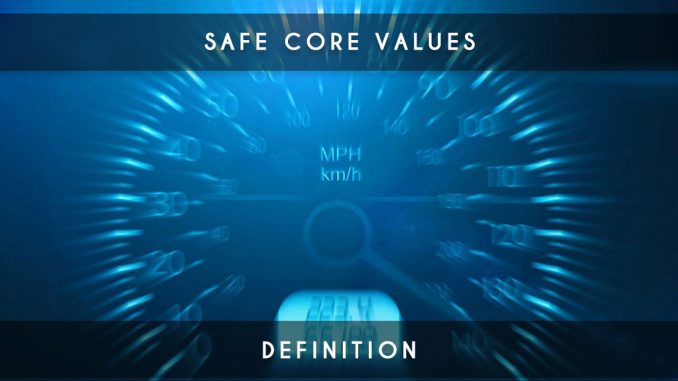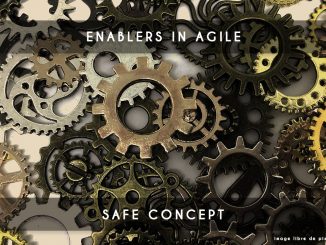
SAFe stands as one of the most widely recognized scaled agile frameworks. This SAFe framework is grounded in 4 Core Values that play a foundational role:
- Alignment
- Built-in Quality
- Transparency
- Program Execution
Furthermore, SAFe presents an illustrative representation of these core values:
 SAFe canvas – safe core values
SAFe canvas – safe core values
SAFe Core Values – Explanation
Let’s delve into why SAFe employs these four principles to underpin its framework. These values distinctly shape the evolution of the framework.
Alignment
Alignment is crucial for swift adaptation, effective collaboration within distributed teams, and market competitiveness. SAFe employs various strategies to foster alignment:
- Strategic and investment alignment through portfolio vision, portfolio backlog, and the overall roadmap.
- Clear lines of communication across different levels – from portfolio to product and solution managers, and from product and solution managers to product owners.
- Utilization of PI objectives and interaction goals for effective communication of expectations and commitments.
- Introduction of cadences, such as PI planning, to ensure alignment across all teams.
- Governance concerning user experience and architecture to ensure alignment and scalability.
- Staying aligned with stakeholders through robust economic prioritization.
Built-in Quality
The focus on built-in quality aims to ensure that teams deliver products of high quality. Each increment must adhere to quality standards to consistently meet stakeholder and customer expectations. Five elements define built-in quality: flow, architecture and design quality, code quality, system quality, and release quality.
SAFe emphasizes three key practices for achieving quality: BDD (behavior-driven development), TDD (test driven development) [French], and agile testing.
 build-in quality – safe core values
build-in quality – safe core values
Transparency
Much like Scrum, SAFe places high importance on transparency for effective functioning. Transparency not only fosters better alignment (the first core value) but also aids in enhancing collaboration. SAFe employs several practices to achieve transparency:
- Portfolio kanban and backlog, program backlogs, and the use of PI objectives.
- Regular inspection and adaptation.
- PI planning sessions.
- Teams and Agile Release Trains (ARTs) have visibility into the portfolio.
- Transparent measurement of progress.
Agile-lean leaders, such as Release Train Engineers (RTEs), play a pivotal role in continuously improving system transparency.
Program Execution
SAFe emphasizes the significance of functional systems and tangible business outcomes. SAFe recommends initiating a transformation with the entire organization, adopting Essential SAFe, rather than starting with just a single pilot team. Introducing agility in a single team can lead to frustration elsewhere. With the establishment of an Agile Release Train (ART), the company can truly create an agile system focused on delivering business outcomes.




Be the first to comment